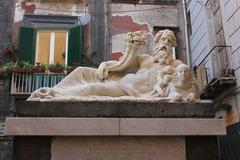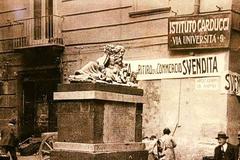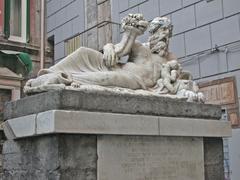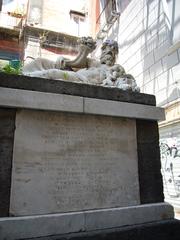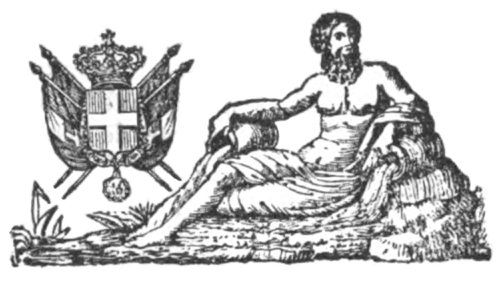
Comprehensive Guide to Visiting Largo Corpo di Napoli, Torre del Greco, Italy
Date: 01/08/2024
Introduction
Largo Corpo di Napoli, located in the vibrant town of Torre del Greco, Italy, offers visitors an unforgettable blend of history, culture, and artistry. This guide provides a comprehensive overview of Largo Corpo di Napoli, tracing its origins from ancient Roman times to its significant role in modern-day coral and cameo craftsmanship. Visitors will be captivated by the area’s historical importance, deeply influenced by its proximity to Mount Vesuvius and the Gulf of Naples. The town flourished under the Bourbon Kingdom of Naples, becoming renowned for its exquisite coral works and cameo production. Today, the artisans of Torre del Greco continue to uphold this legacy, creating masterpieces cherished worldwide (Morelli, 2023). Whether you’re a history buff, an art lover, or a curious traveler, this guide will help you navigate the rich heritage and vibrant culture of Largo Corpo di Napoli, making your visit a truly enriching experience.
Table of Contents
- Introduction
- Origins and Early History
- The Bourbon Kingdom and the Rise of Coral Craftsmanship
- The Influence of European Aristocracy
- The Grand Tour and the 19th Century Boom
- Modern Innovations and Global Reach
- The Role of Giovanni Apa and LPM
- Cultural Significance and Visitor Experience
- Practical Tips for Visitors
- Nearby Attractions and Special Events
- FAQ
- Conclusion
Origins and Early History
Largo Corpo di Napoli has a rich and storied history that dates back centuries. The area, like much of Torre del Greco, has been significantly influenced by its proximity to Mount Vesuvius and the Gulf of Naples. The town itself has been a hub of activity since ancient times, with its origins tracing back to the Roman era. The strategic location of Torre del Greco made it an important site for trade and commerce, particularly in the fishing and coral industries.
The Bourbon Kingdom and the Rise of Coral Craftsmanship
The history of Largo Corpo di Napoli is closely intertwined with the rise of coral craftsmanship in Torre del Greco. During the Bourbon Kingdom of Naples, the town became renowned for its coral works. In 1805, King Ferdinand IV established the Real Fabbrica di Coralli, a royal cameo-making enterprise in Torre del Greco. This factory played a pivotal role in the town’s economy, bringing together the trades of fishing, craftsmanship, and international commerce (Morelli, 2023).
The Influence of European Aristocracy
The Napoleonic era further boosted the prominence of Torre del Greco’s coral and cameo industry. Caroline Bonaparte, the younger sister of Napoleon I, became queen of Naples in 1808. Under her influence, neoclassical taste overtook the European aristocracy, fueling the Napoleonic court’s interest in cameos and items reminiscent of antiquity. Many of the works commissioned by members of Napoleon’s inner circle were produced in Torre del Greco (Morelli, 2023).
The Grand Tour and the 19th Century Boom
By the 1830s, the Grand Tour—a traditional trip around Europe undertaken by mainly upper-class European young men—had become a rite of passage. Torre del Greco, with its burgeoning coral and cameo industry, became a popular stop. The town’s artisans catered to an international clientele, and the demand for their intricate works soared. By the mid-19th century, private coral and cameo businesses had set up shop, and the production of these items took off (Morelli, 2023).
Modern Innovations and Global Reach
In the 20th century, Torre del Greco’s artisans continued to innovate and adapt to changing tastes. Haute jewelers around the world, including Cartier, Boucheron, Bulgari, and van Cleef & Arpels, sought out the town’s craftsmen to create signature pieces for their fashion lines. This period also saw the rise of local talents like Amedeo Scognamiglio, who brought the tradition of Torre del Greco to international cities like New York and Tokyo, incorporating modern motifs into the ancient craft (Morelli, 2023).
The Role of Giovanni Apa and LPM
In 1848, Giovanni Apa, a supreme Master goldsmith, founded his studio in Torre del Greco. His company, now known as LPM, continues to uphold the tradition of coral and cameo craftsmanship. The artisans at LPM select only the finest coral and the most beautiful shells to create exclusive jewelry and cameos of great value and extraordinary beauty. Each piece is a testament to the long and expert craftsmanship that has been handed down through generations (APA Torre del Greco).
Cultural Significance and Visitor Experience
Today, Largo Corpo di Napoli and the broader Torre del Greco area remain epicenters of Italian cameo production and coral jewelry making. The town’s economy and cultural identity are deeply linked to this traditional art. Visitors to Torre del Greco can explore museums and studios that showcase rare collections of coral jewelry, cameos, and statues in Neoclassical style. Many establishments offer live demonstrations of cameo carving and provide historical background on the technical processes involved (APA Torre del Greco).
Practical Tips for Visitors
For those planning a visit to Largo Corpo di Napoli, here are some practical tips to ensure a memorable experience:
- Transportation: Torre del Greco is easily accessible by train from Naples, with frequent services running throughout the day. The town is also a short drive from the motorway exit, making it convenient for those traveling by car.
- Parking: Many establishments, including museums and studios, offer secure parking facilities for visitors.
- Guided Tours: To fully appreciate the history and craftsmanship of Torre del Greco, consider joining a guided tour. Many tours are multilingual and provide in-depth insights into the town’s rich heritage.
- Visiting Hours and Tickets: Most museums and studios in Torre del Greco have specific visiting hours and may require tickets for entry. It’s advisable to check their official websites for the latest information on opening hours and ticket prices.
- Shopping: Torre del Greco is renowned for its coral and cameo jewelry. Visitors can purchase unique pieces directly from artisans, ensuring authenticity and quality.
- Local Cuisine: Don’t miss the opportunity to sample local delicacies. Torre del Greco’s coastal location means that seafood is a highlight, with many restaurants offering fresh, locally-sourced dishes.
Nearby Attractions and Special Events
- Mount Vesuvius: A short drive from Torre del Greco, visitors can explore the famous volcano that shaped the region’s history.
- Herculaneum: This ancient Roman town, preserved by volcanic ash, offers a fascinating glimpse into the past and is a must-visit for history enthusiasts.
- Special Events: Torre del Greco hosts various festivals and events celebrating its coral and cameo heritage throughout the year. Check local listings for dates and details.
FAQ
Q: What are the visiting hours for Largo Corpo di Napoli?
A: Visiting hours vary by establishment. It’s best to check the official websites of the museums and studios you plan to visit for the most up-to-date information.
Q: Are there guided tours available?
A: Yes, many guided tours are available, offering multilingual options to cater to international visitors.
Q: Where can I buy authentic coral and cameo jewelry?
A: Authentic coral and cameo jewelry can be purchased directly from artisans in Torre del Greco, ensuring high quality and craftsmanship.
Q: Is Torre del Greco accessible by public transport?
A: Yes, Torre del Greco is easily accessible by train from Naples, with frequent services running throughout the day.
Conclusion
Largo Corpo di Napoli, with its deep historical roots and vibrant cultural scene, offers visitors a unique glimpse into the rich tradition of coral and cameo craftsmanship. Whether you’re a history enthusiast, an art lover, or simply looking to explore a charming Italian town, Torre del Greco promises a memorable experience. Stay updated on visiting hours, ticket prices, and special events to make the most of your trip. For more information and updates, follow us on social media or check out our other related posts (APA Torre del Greco).

